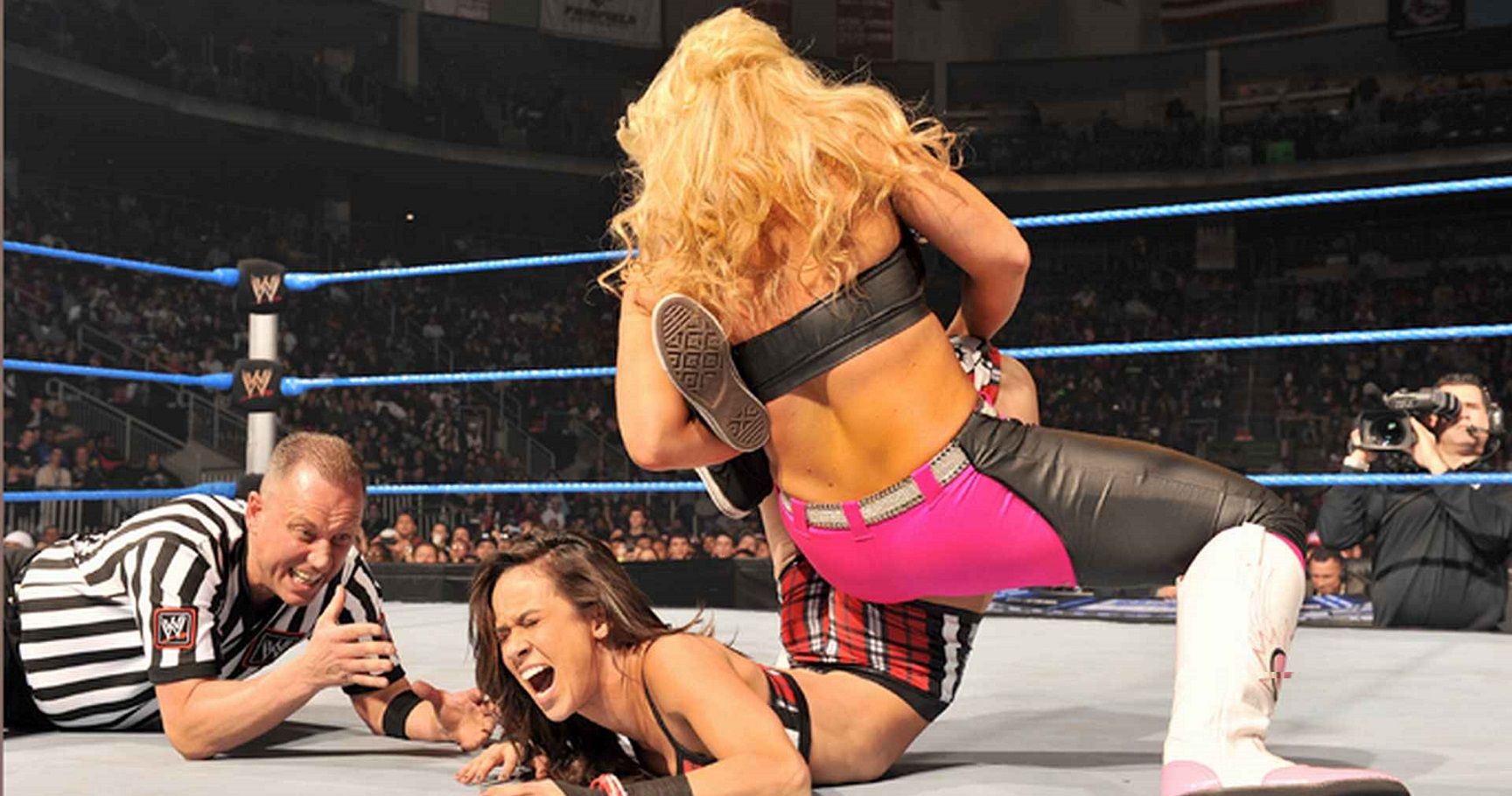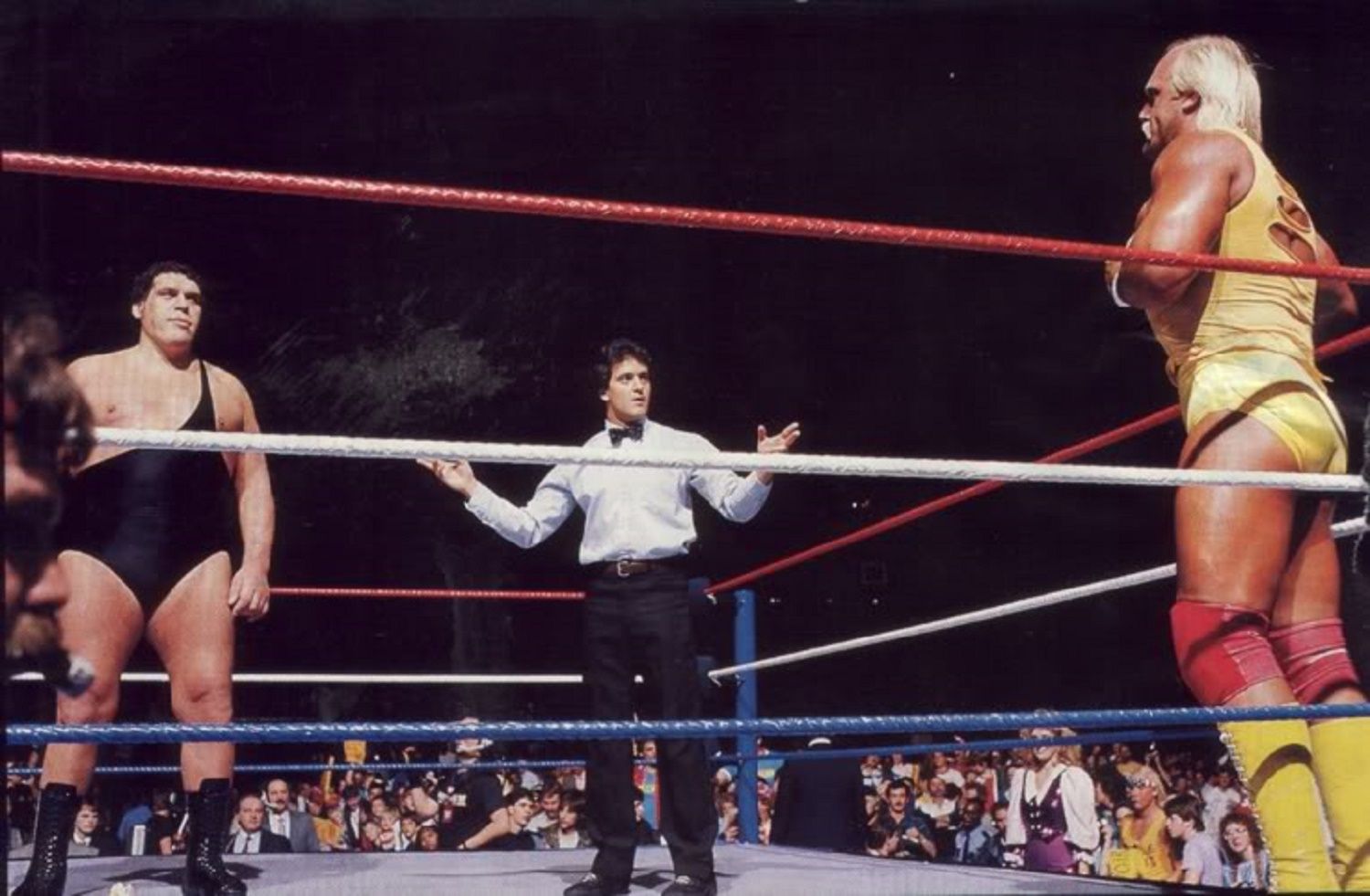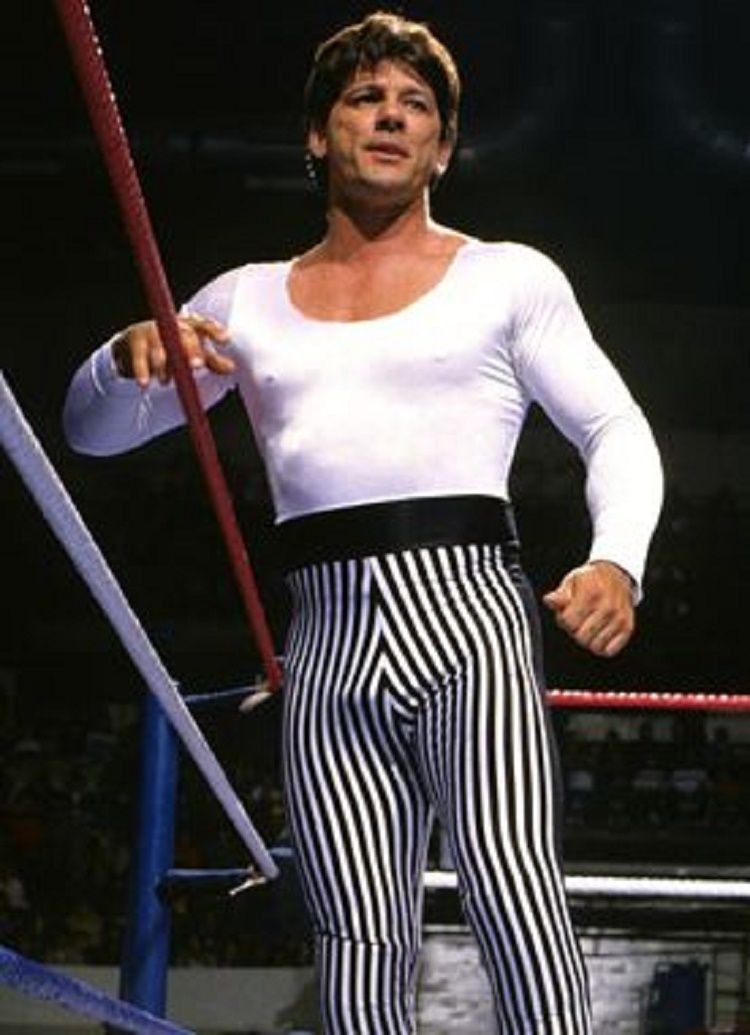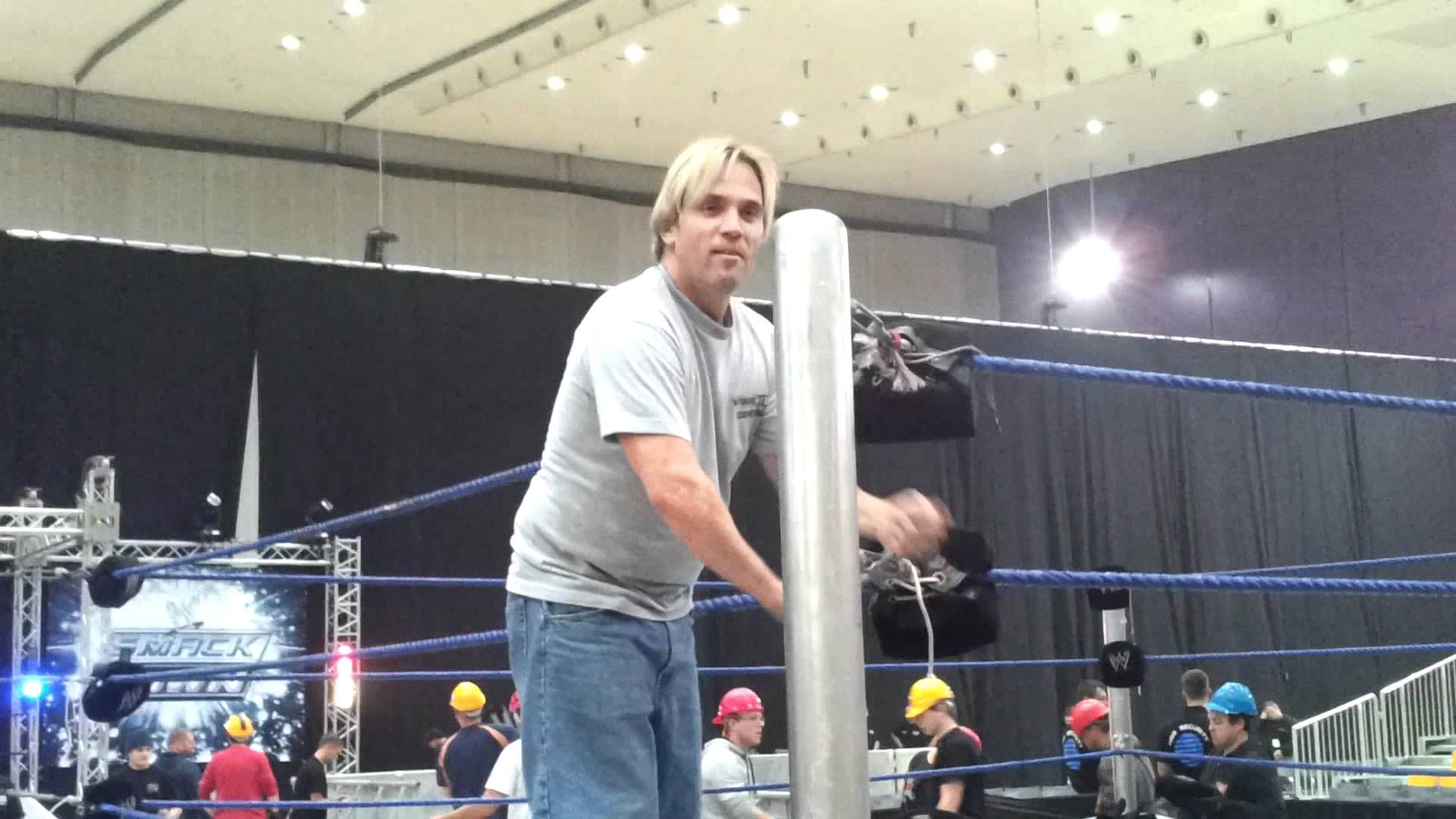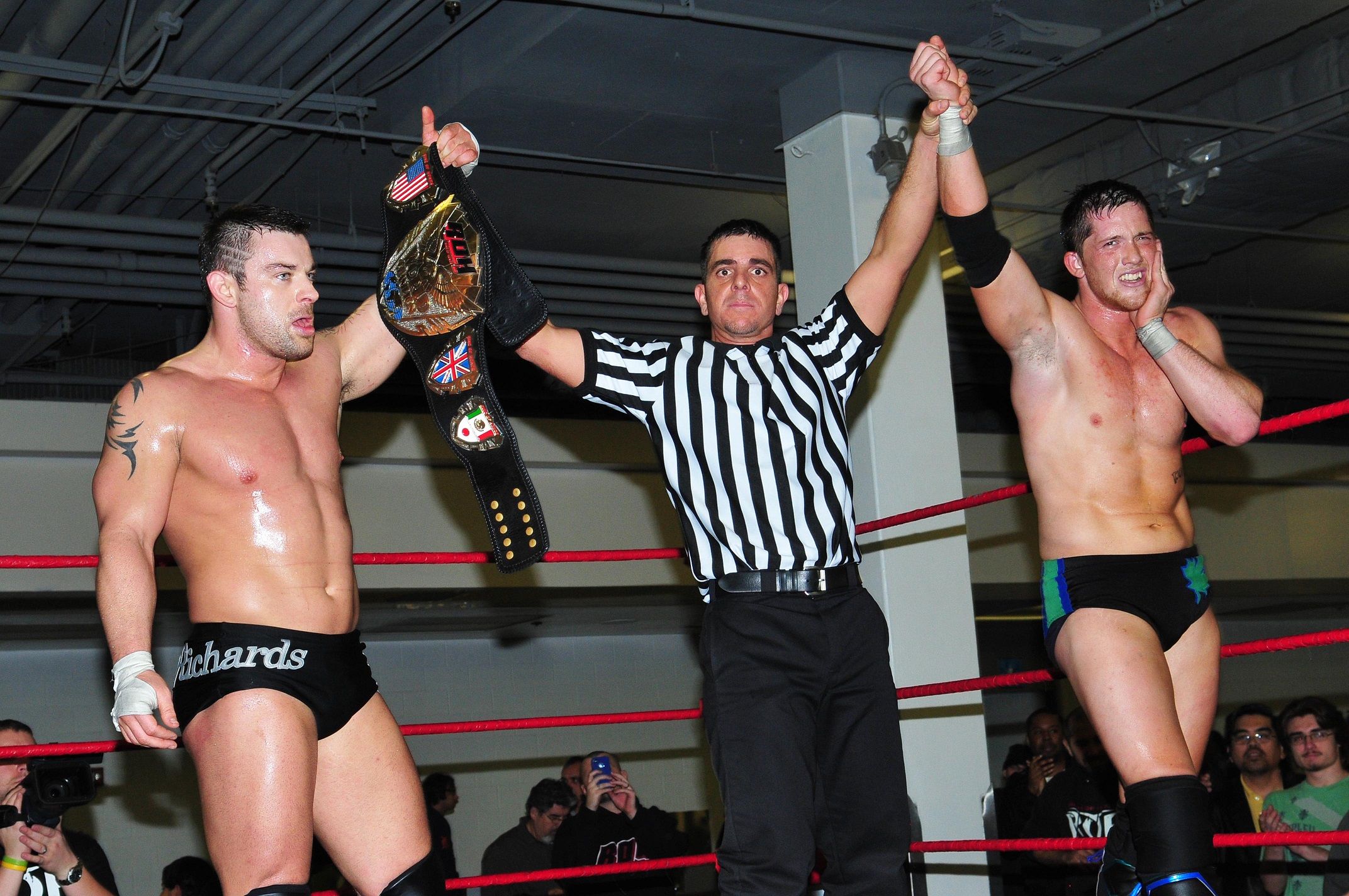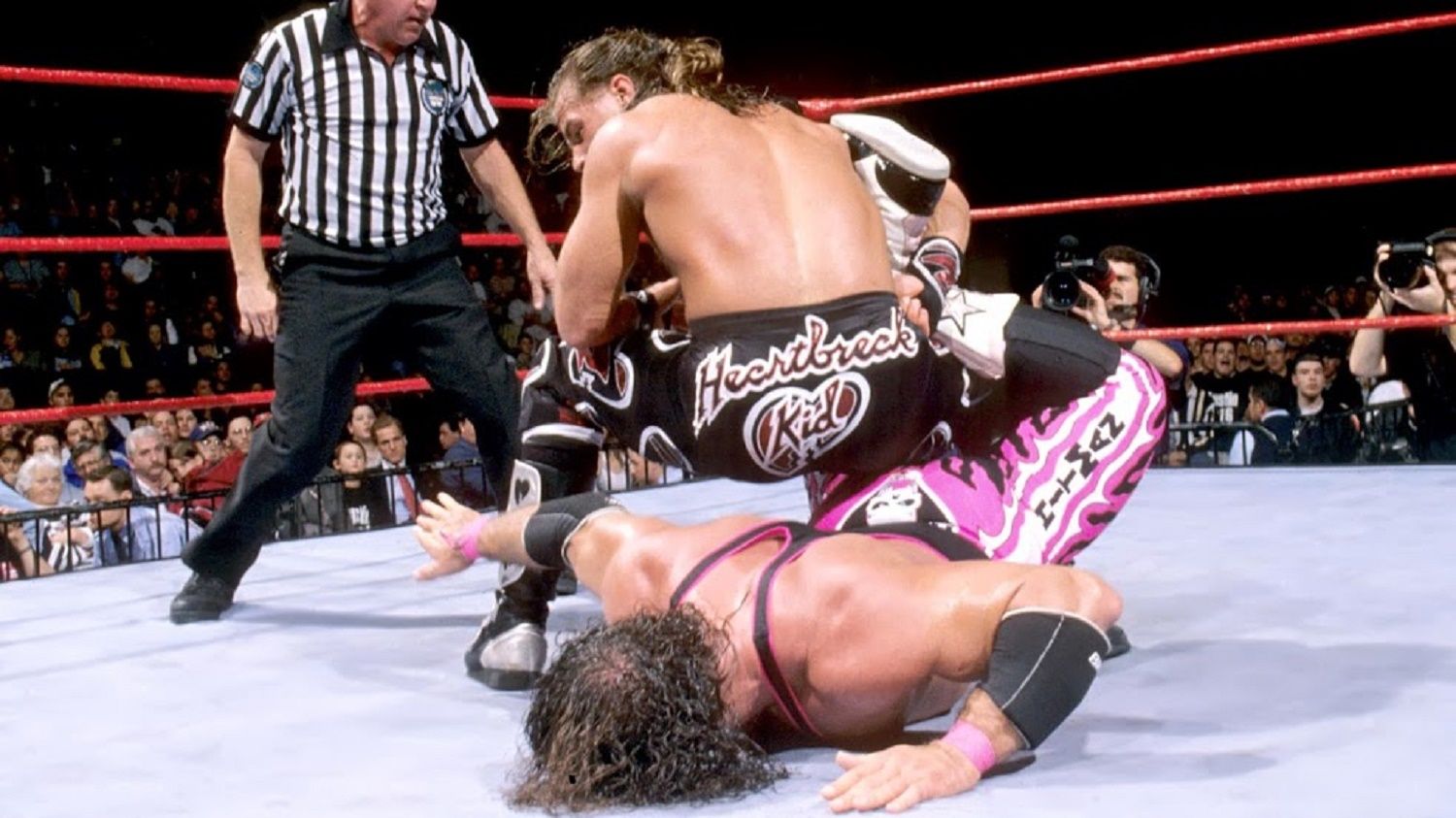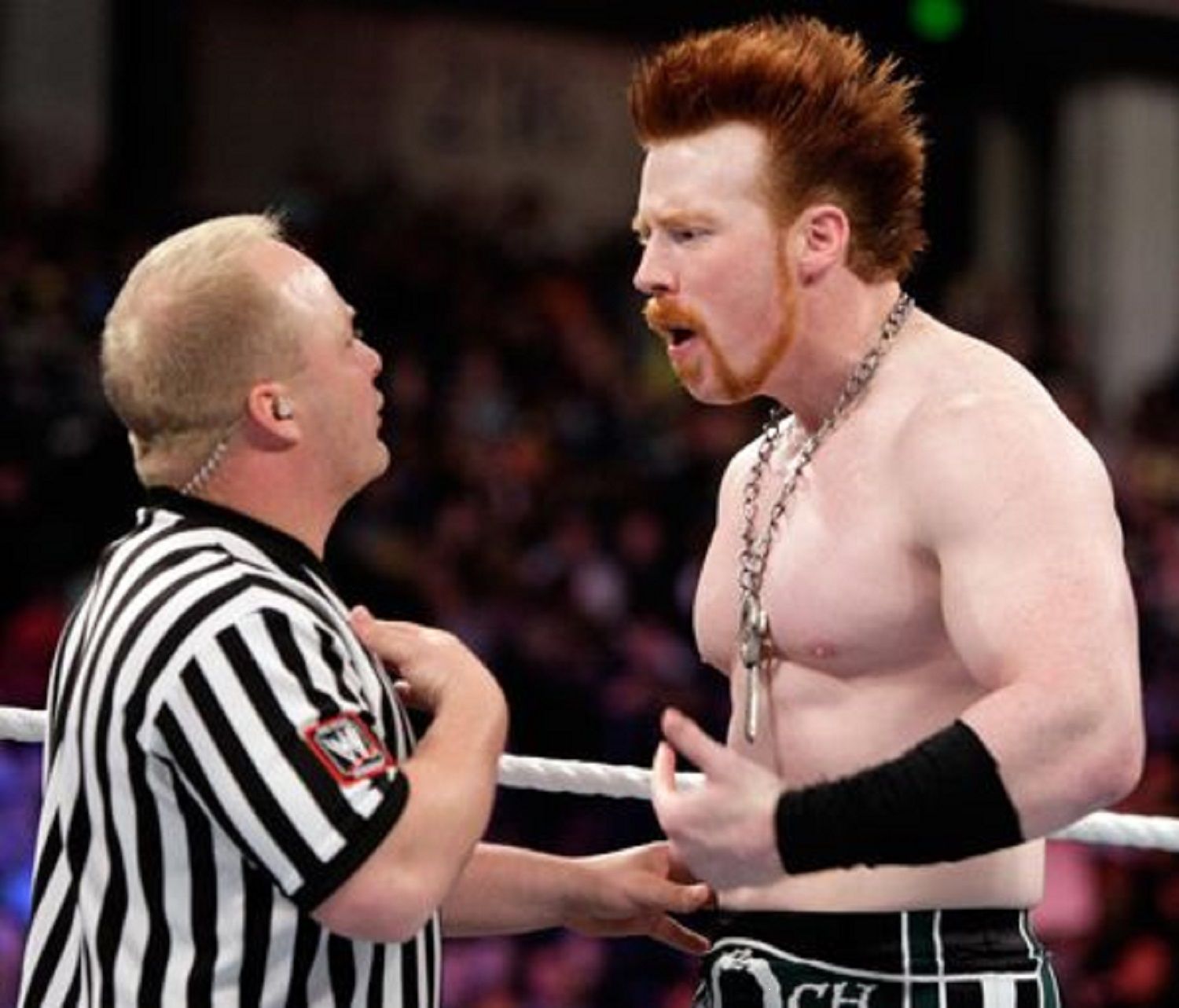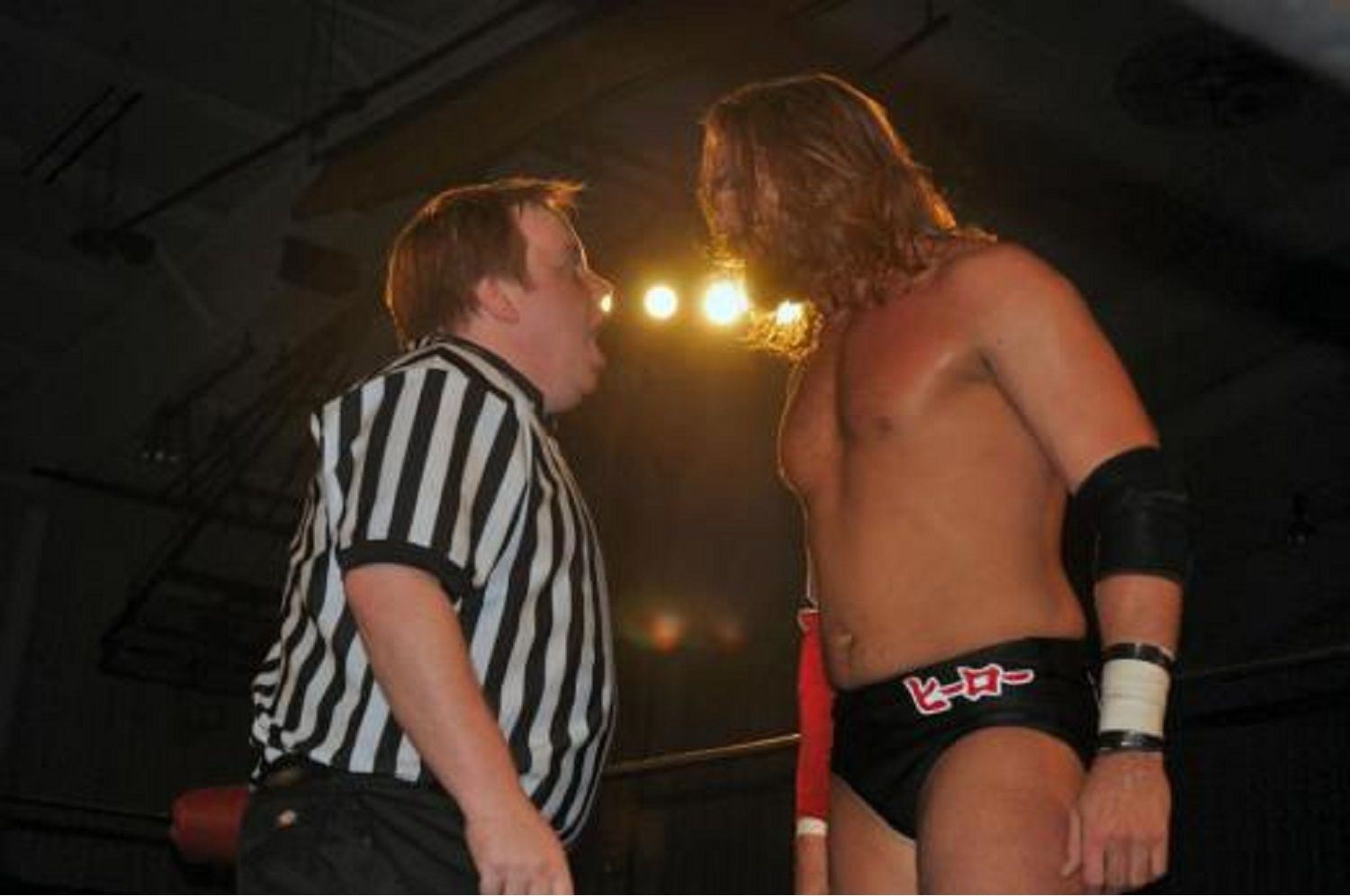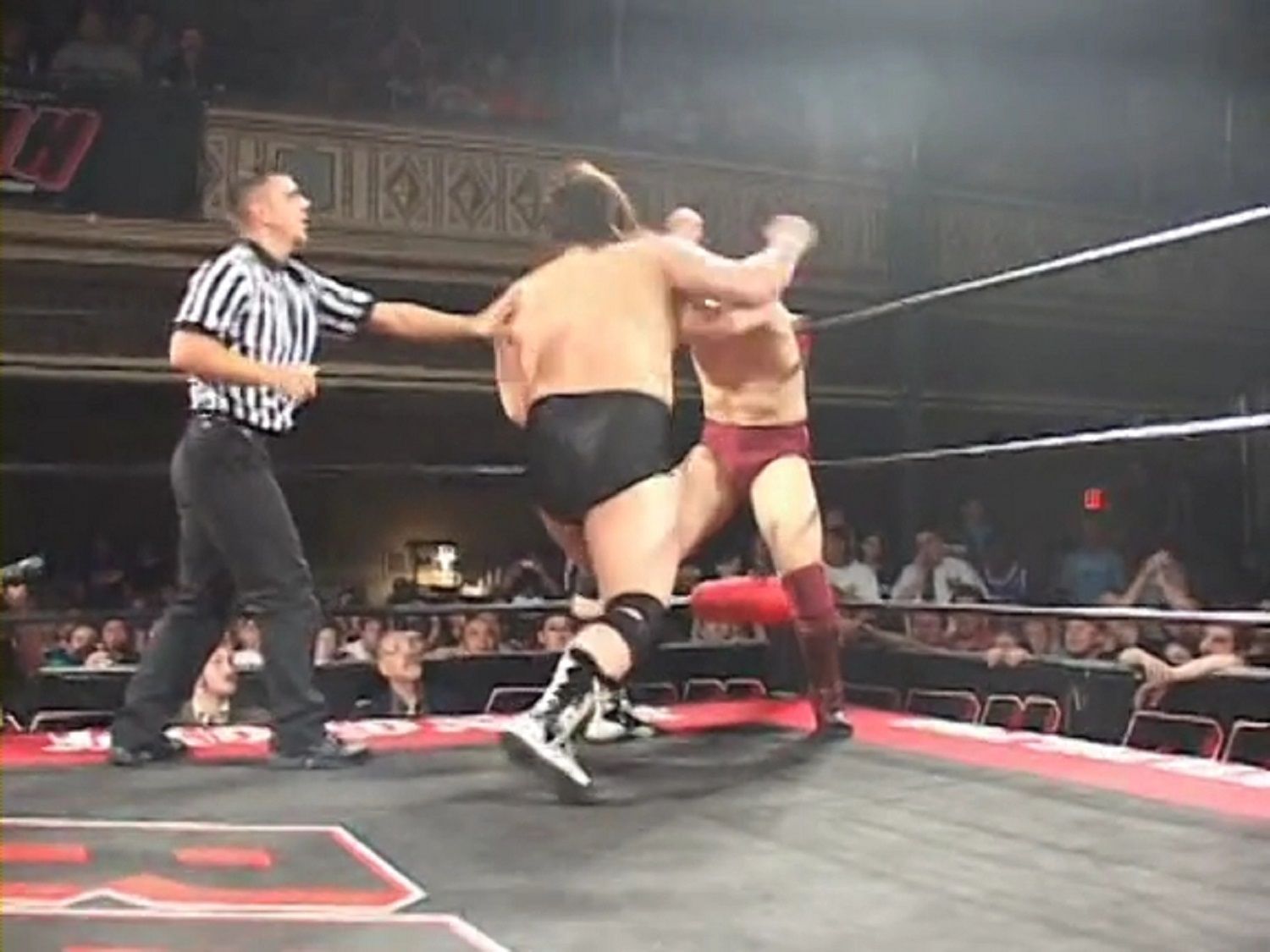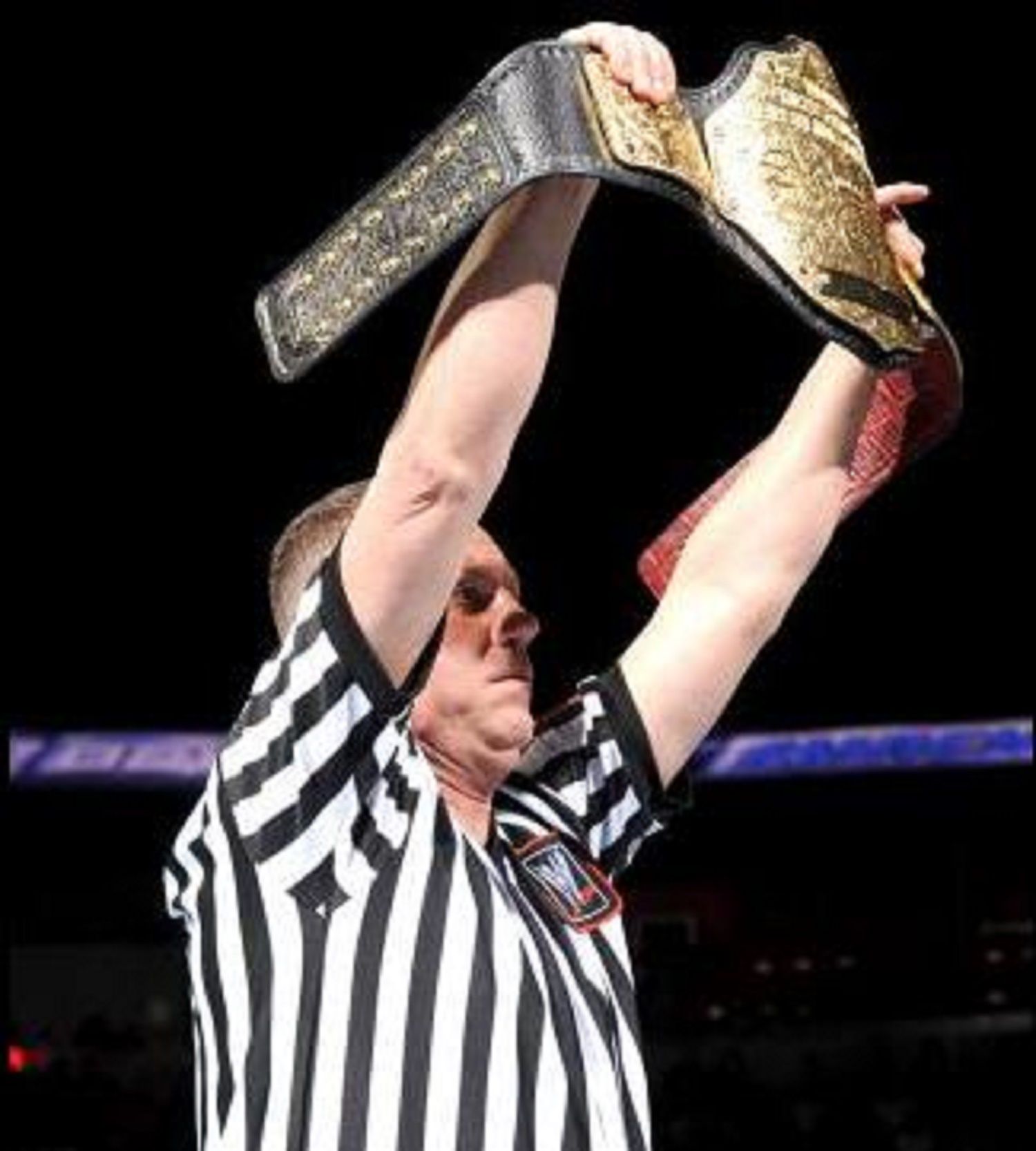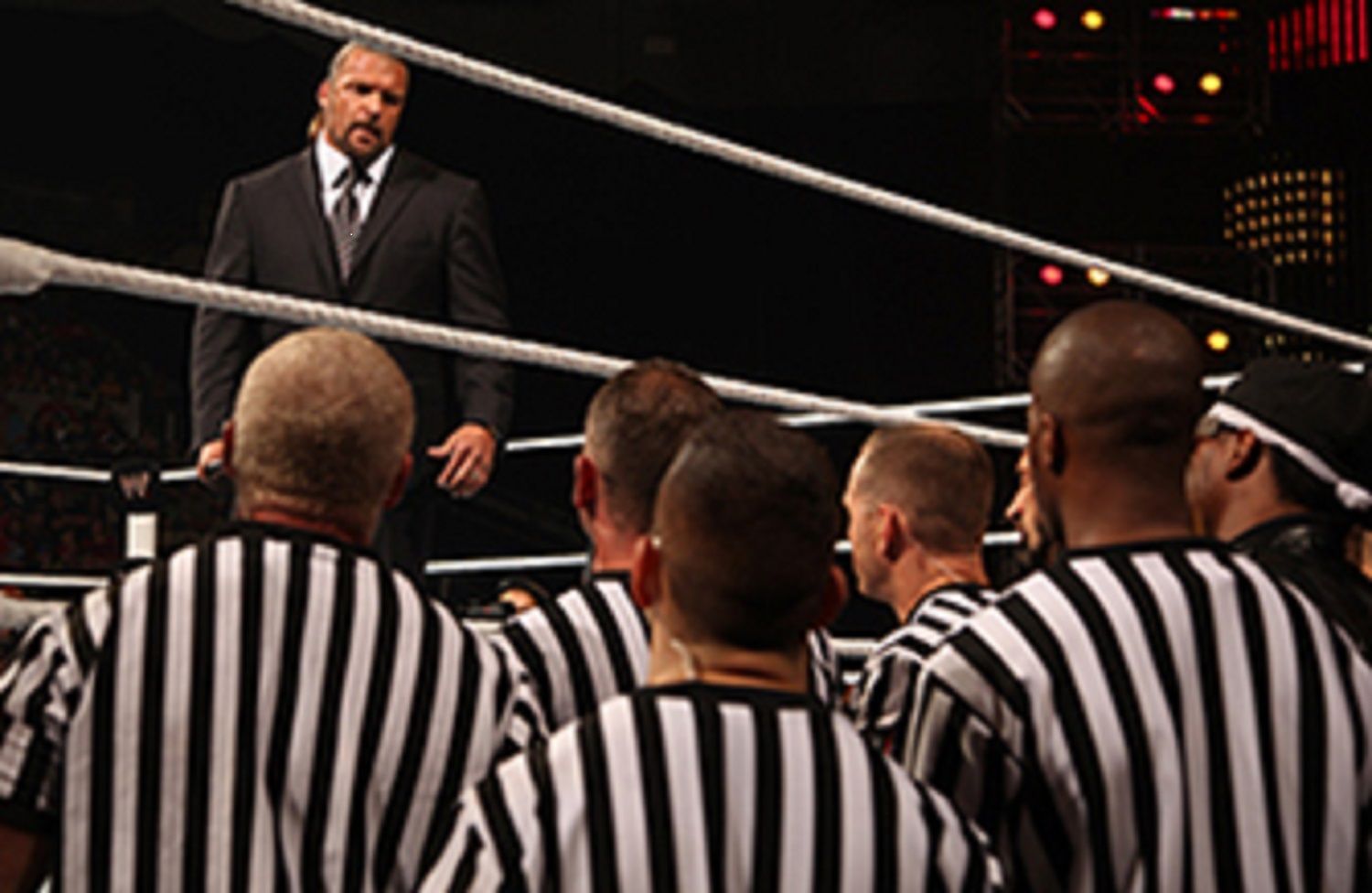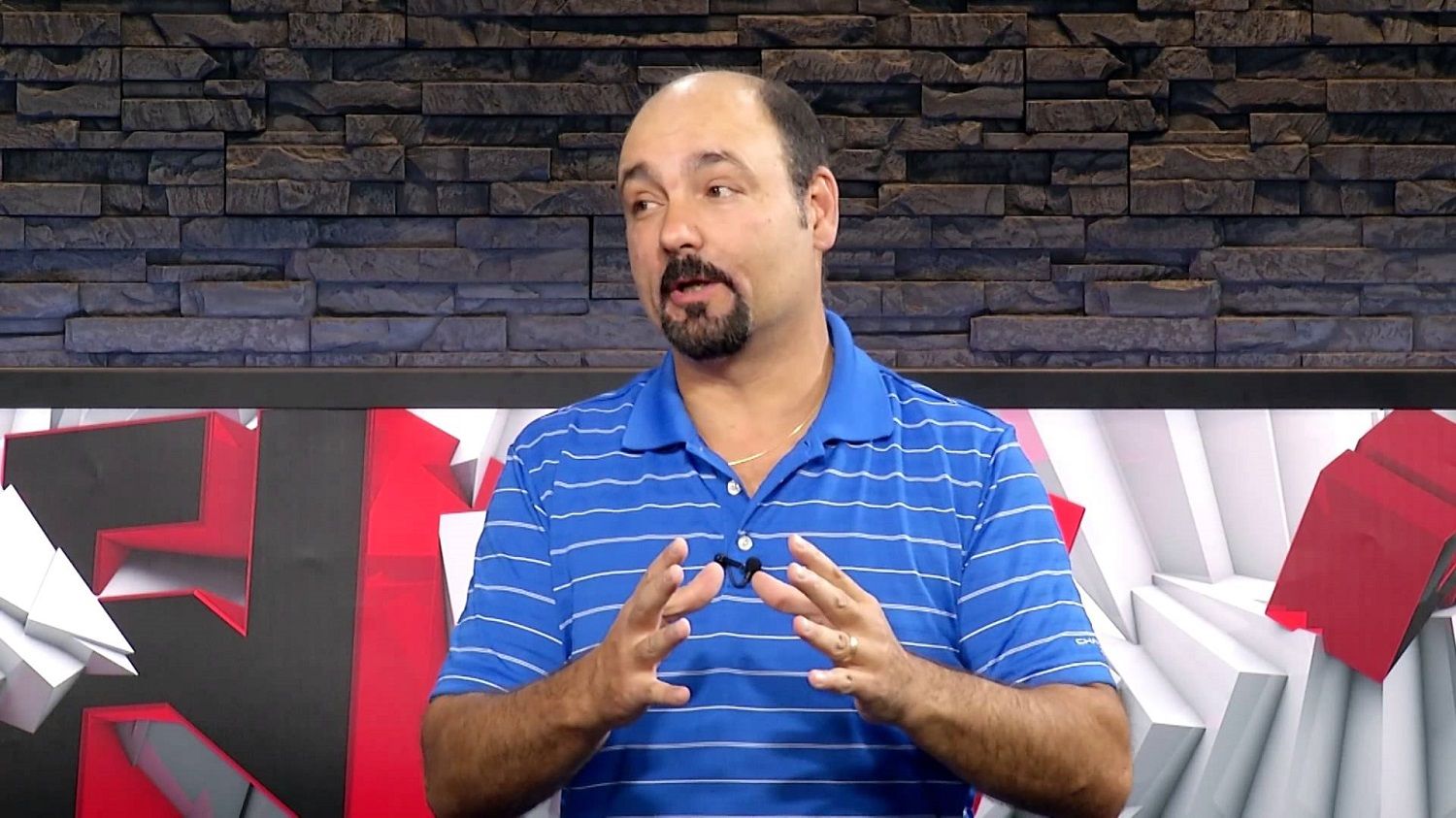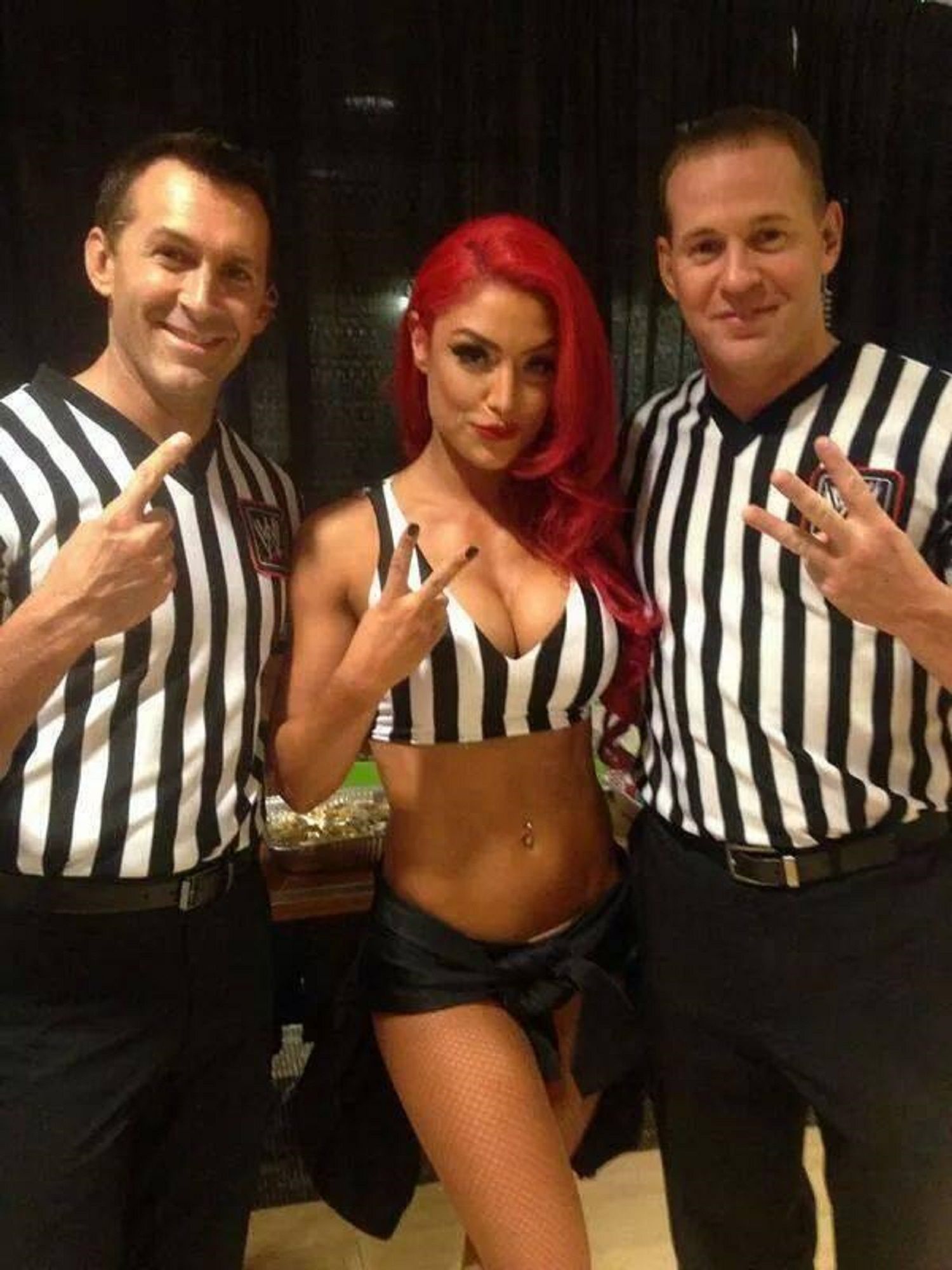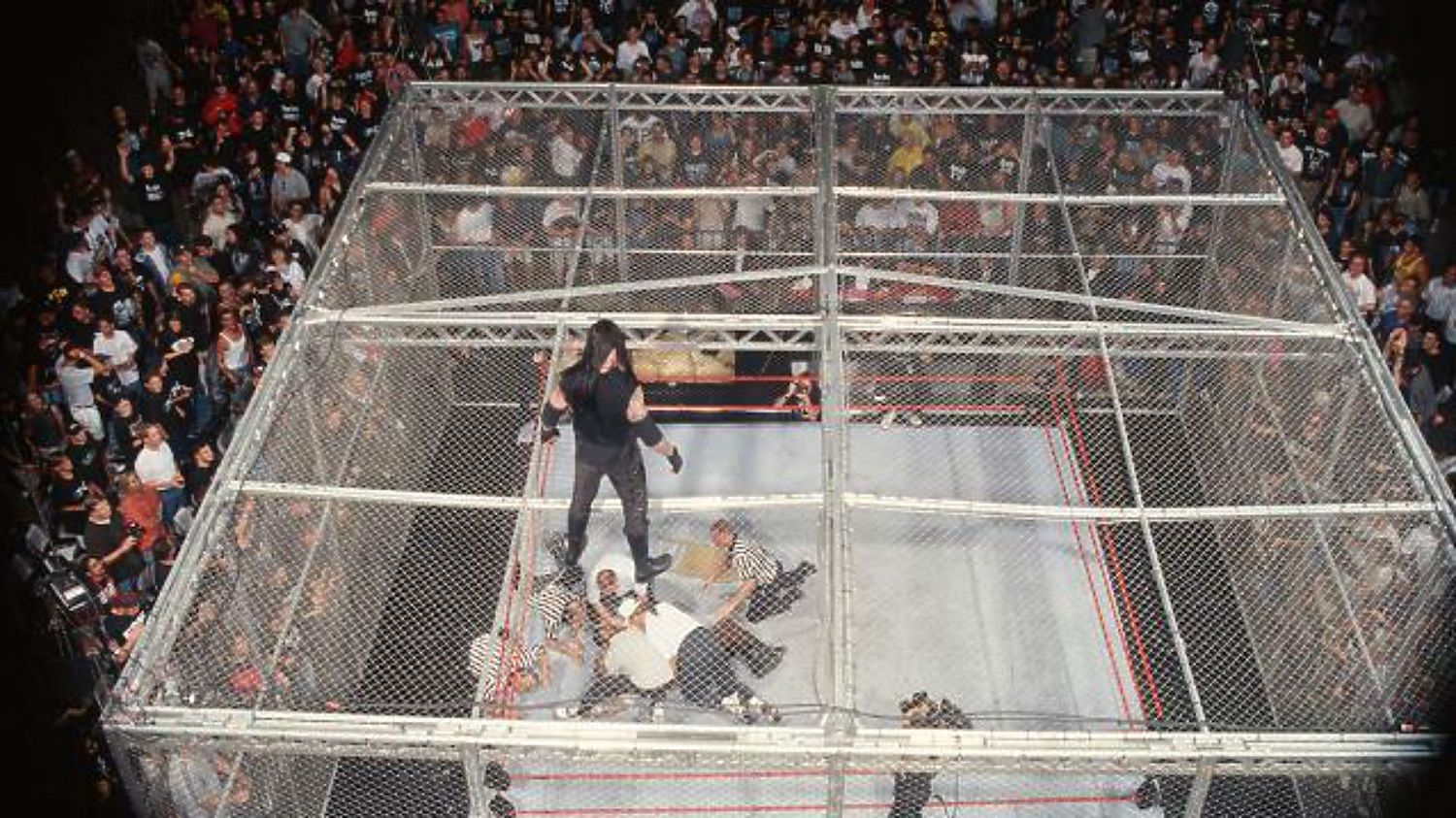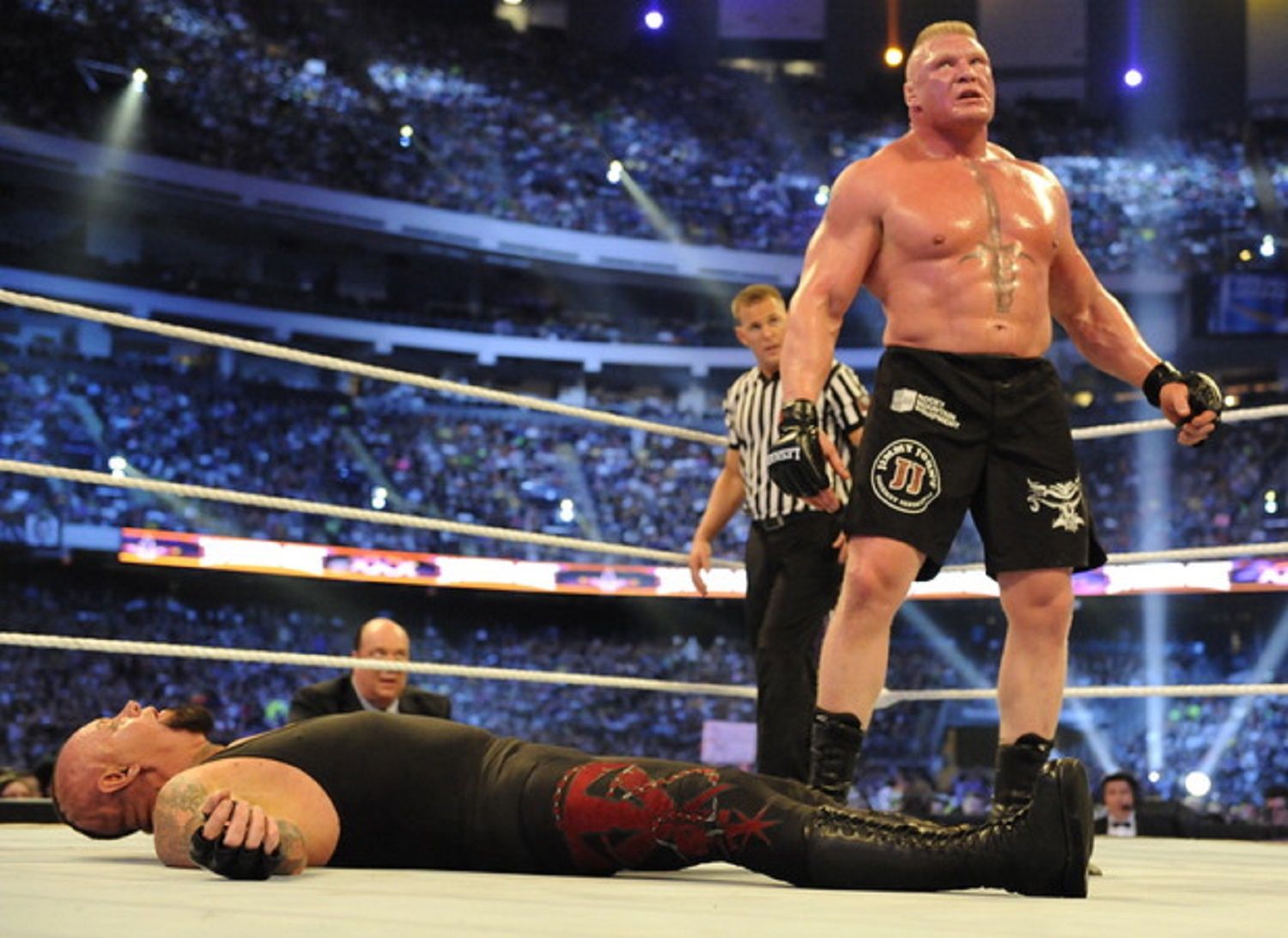Contrary to popular belief, it takes a lot more to be a wrestling referee than you might think. They don't just follow wrestlers around the ring, break holds and hit the mat for a three count. It's an extremely difficult and dangerous job that often involves directing a match, jumping out of the way of move sets and being berated and intimidated by top officials to perform at a high standard.
For the most part, many of us never notice referees on weekly professional wrestling programs. They tend to blend into the background, only to jump out when needed. Yet they play a vital role in the outcome of a match.
Referees must be quick thinkers. They need to understand where to stand in the ring, when to help wrestlers and when an injury is kayfabe or real. Imagine being the referee (and WWE officials) during Mick Foley and The Undertaker's 1998 Hell in a Cell match at the King of the Ring pay-per-view? When Foley was thrown through the cage by The Undertaker, how was the referee to know whether to end the match or let it play through, especially when most wrestlers--like Foley--will perform through injuries?
To make matters even more challenging, they sometimes know just as much as the crowd when it comes to how a match will play out. This makes it especially tricky for a referee to know whether they are supposed to hit the three count or just let up before a wrestler raises a shoulder.
To us, they are men in black pants and pin stripes that appear to do nothing. However, to professional wrestling companies and smaller indie promotions, they are a crucial part of the show.
To show our appreciation for the gentlemen who often risk just as much as the wrestlers, here is our list of interesting facts you may not have known about professional wrestling referees.
15 15. Referee Uniforms Have Changed
Plop in an old VCR tape of Hulk Hogan vs. Andre The Giant at WrestleMania 3. Chances are, the last time you watched it, you weren't looking at the referees. After all, you had two of the greatest wrestlers in the world going at each other. But this time, take a look at what the referee is wearing. A blue shirt, black pants and a black bow tie. Today, that'd be a true throwback because nothing compares.
Over the years, that outfit transformed into grey and black polo shirts, black and white striped shirts, all black shirts and today's black and white striped shirts with black pants.
Just like the WWE, the referees have also changed with the times.
14 14. Professional Referees Also Have Personalities
Unless there's a special guest referee, most refs don't interfere in matches. They simply call it as they see it, instructing the wrestlers, breaking them apart and counting pin falls.
But if you think long and hard, we're sure you can remember at least a few who infamously played roles in match outcomes. Does Danny Davis come to mind?
While Davis was also a wrestler, he actually had a longer career in the WWE as a referee. Davis was best known as a biased ref who had a tendency to favor heels, quick counting baby faces and slow counting villains.
13 13. Referees Work Overtime
Refs don't only work one match a night. Some may work four or five different matches in a single evening. Then, when the lights dim and the audience shuffles out of the building, they begin their second job: taking down the ring.
Many refs work as part of the ring crew, assembling the ring before the show and taking it down late at night. Some famous refs who did this include Charles Robinson, Jack Doane and Chad Patton.
12 12. TV Refs Have More Resources to Work With Than Indy Refs
When you watch your favorite wrestlers go head-to-head on television, much of what you see has already been drawn up backstage. The wrestlers discuss, if not practice, moves beforehand, setting up their match like authors do their story.
The same goes for professional referees who have the support of agents, trained wrestlers and security to help them understand how a match will play out. On the other hand, indie refs have much less to work with. Former indy wrestler Dustin Nichols once described how he sometimes had to improvise during matches:
" Us independent referees hit the ring armed with bare-bones knowledge of what's about to happen. I know who's winning and what pre-planned spots to watch for so that my skeleton remains unshattered for one more day..and that's it. I literally wing everything else. Sometimes, if I'm working so many consecutive bouts that I forget who's winning half of them, I'm forced to wing results too. In that case, I simply pray people kick out when they're supposed to and stay when they're not."
On the professional scene, this strategy simply wouldn't work. A miscount could mess up a month's worth of storylines, affect sales and irk fans and investors. Of course, something like this would rarely, if ever, happen at more professional outlets because the referees use ear pieces and have much more backstage support to keep them in the loop.
11 11. TV Refs Know What Will Happen ... for the Most Part
What were you doing on November 9th, 1997? If you were old enough, into wrestling and had enough money to purchase WWE's Survivor Series pay-per-view, you were likely witnessing Brett Hart get screwed over by Vince McMahon, Shawn Michaels and Triple H in the WWE Championship match. But did you know that referee Earl Hebner played a role in the match's outcome too?
Long story short, McMahon, Michaels and Triple H conspired to snatch the WWE Championship away from Hart before he jumped ship to WCW. McMahon feared Hart would not lose the match to Michaels and instead take the title with him to the rival promotion.
"It was a close-knit group who knew about the screw job," said Hart. "I was getting ready to go through the curtain when they circled Earl and basically told him this was how the match was going down. They also reminded him he was mic'd, with a microphone behind his ear, so they could hear everything he said. If he did anything to top me off, they'd fire him."
10 10. TV Refs Wear Earpieces for a Reason
While we stated it briefly in our last segment about Hart and Hebner, let's delve a little bit more into how refs play a role in a match's outcome. If you ever noticed referees wearing an earpiece, it's not for show. They use these pieces to communicate with backstage personnel, writers and likely, as was the case with Hebner, Vince McMahon.
These earpieces ensure the refs stay alert of any changes that may suddenly happen before or during a match. It helps them figure out where they should position themselves and also enables them to relay information to wrestlers. Usually they do this in the form of "reprimanding" them for some kind of illegal move.
9 9. Indy Refs Often Have to Improvise on the Spot
Unlike TV refs who have a collection of resources to draw from during a match, indie refs often have to improvise. Just like you and I, they too are often trying to figure out what the hell is happening in the ring.
While that sounds like it could be fun, the likelihood of getting hurt also increases. Whereas TV refs have a better understanding of where wrestlers might throw each other, indie refs often have to guess, exposing themselves to dangerous moves.
8 8. Indie Refs Must be Part of the Action
How many times have you watched a televised wrestling match (e.g., WWE, TNA, NXT) and noticed the referee? Maybe when he gets "accidently" run into or thrown out of the ring. But that's it. They're background players. The last admired referee to step inside WWE's squared circle was Earl Hebner who the company parted ways with in 2005.
In the indie's, referees have to be in the center of it all. Most indie matches have a capacity crowd of 400 to 500 people which means, if the match is dull, everyone could be exposed. Referees act similar to one of Shakespear's fools. They gesture widely, move quickly and make sure the audience knows they're there.
7 7. Refs Earn Gold in the Ring
It's not easy being a referee. They, like the wrestlers, must have ring awareness. They must understand spacing and wrestler tendencies and direct traffic throughout a match. They are also the de facto decision maker when it comes to halting a match due to injury.
So, it' no surprise they get paid well. On average, referees in big promotions earn around $2,500 a week. New refs may take home half of that, while referees who oversee pay-per-views can earn upwards of $5,000 a week.
6 6. Sometimes That Gold is Only Fool's Gold
In May 2014 The Wrestling Observer reported that WWE referees were unhappy with their pay. While they could earn upwards of $5,000 a week depending on the circumstances, it was still not enough due to travel expenses, hotel reservations and health insurance, to name a few.
Their pay was also not completely set. It would often jump up and down depending on how well the promotion was doing.
5 5. Jim Korderas was Knocked Out During a Jimmy Hart Spot
Korderas was a WWE referee for over 20 years. He was part of some of the biggest pay-per-views, including several WrestleMania events.
One of his most memorable moments came at WrestleMania IV when he was the referee of a match between The Honky Tonk Man and Brutus Beefcake. During the match, Jimmy Hart was supposed to kayfabe hit Korderas to help the Honky Tonk Man retain the championship. However, Korderas was actually and accidently knocked unconscious.
In an interview with The Count 10, Korderas cleared the air and said it wasn't the megaphone that knocked him out, but instead the mat when his "chin hit the canvas after the megaphone shot."
4 4. Referees Can Go Rogue
In 2004 Daniel Puder, a former mixed martial artist and contestant on WWE's reality TV program Tough Enough, stood toe-to-toe with Kurt Angle in the middle the squared circle on an episode of SmackDown. Angle had challenged cast members to wrestle and Puder accepted his challenge. The two fought for a few moments before both fell to the mat. Puder then locked Angle into the kimura lock--an MMA move--and one that is not legal in amateur wrestling. Angle is an amateur wrestler.
"Charles Robinson and I saw that things were starting to get very serious," said referee Jim Korderas. "When Puder got Kurt in the kimura, we knew we had to do something. Even while in the kimura, Kurt got Puder on his back and I instinctively counted to three. In hindsight, being an amateur style match, I should have only counted to one...I must say that I was nervous and concerned through the whole ordeal."
Even though Korderas didn't break kayfabe, had he been able to redo the moment, he would have for the sake of Angle's safety.
3 3. They Have Fun
For most of this article, we've discussed how difficult it is to be an indie or professional wrestling referee. They work long hours, have to jump out of the way of drop kicks and have to control and direct matches in front of millions of onlookers.
What we can't forget, however, is that many of them love their jobs and have fun. Wes Adams, who worked as both a wrestler and referee, once called a match where he had both Finlay and Jerry Brisco in his earpiece. Finlay was the main agent in charge but Brisco got into Adam's earpiece and instructed him to leave the ring. Adams obliged. However, Finlay then immediately told Adams to get back in the ring. This went on for several moments until Adams could hear Brisco laughing in the background.
2 2. Sometimes Wrestling Becomes Too Real
When Mick Foley and The Undertaker squared off in a Hell in a Cell match in 1998, they had a couple of high-flying sets planned. According to Terry Funk, he and Foley had the idea of The Undertaker throwing Foley off the top of the cell. Foley would climb back up and Taker would chokeslam him through it.
The first fall worked. The second failed miserably because of the event's prop staff who didn't properly secure the cage. Foley shot straight through, taking the full brunt of the fall.
Funk, refs and staff members jumped into the ring to check on Foley. "I thought he was dead...I got up and went over to The Undertaker who was standing next to the people checking on Mick, and I told him, 'He's not going to be here. That's it. Cactus isn't going to make it."
1 1. Referee Chad Patton Was Left in the Dark at WrestleMania 30
Referees are usually well prepared for a match. They are clued into how matches will progress, where certain spots will take place and how long a match should go. But sometimes, they have no clue how a match will end.
WWE, and many promotions, are notorious for keeping announcers in the dark about certain upcoming events. This ensures there's a realistic level of surprise when the moment takes place. But it's interesting to hear that refs, one of the key drivers in a match, are often, well, driving blind.
During The Undertaker's match vs. Brock Lesnar at WrestleMania referee Chad Patton didn't know how the match would end. Rumors have it that Patton was told The Undertaker would win, as always, and to count any pin fall as normal.
And you think all of us were shocked when Lesnar won? Imagine what Patton was feeling when he hit the three count on The Undertaker. Had he made a mistake? Was his job now on the line?

